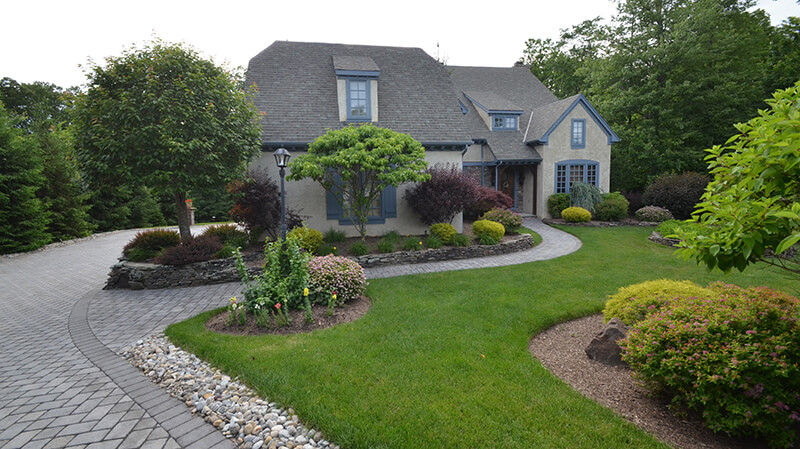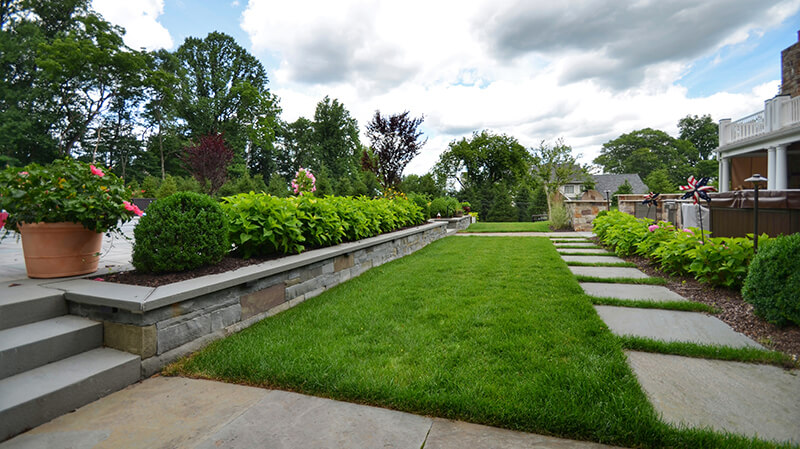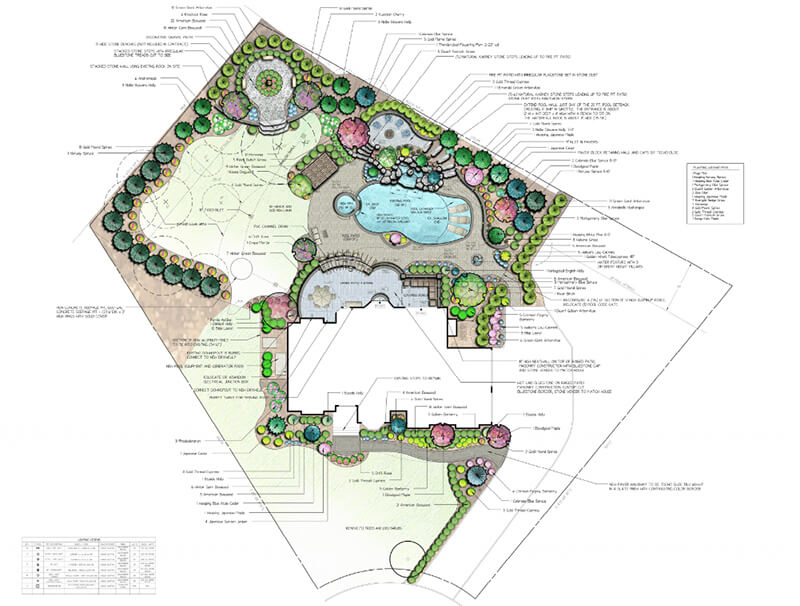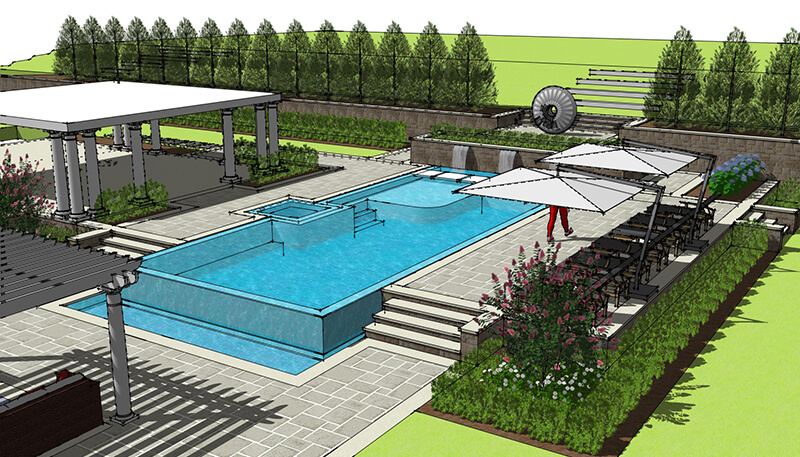Planning a landscape design takes some real thought. The best way to start is by looking carefully at your property to determine areas of sun, shade, slope, or other features of your existing landscape.
Look at your home’s exterior for design inspiration. Decide which existing features you want to keep, such as certain mature trees.
And most importantly, determine exactly what your goals are for your outdoor space. This will help you achieve the look and function you desire.
Work with a landscape designer to create a layout for your property where each element serves a purpose. Then add a splash of your unique style and personal taste.
Putting your concept on paper can provide clarity while saving you time, money, and lots of work. Design plans show the scope of work to complete.
They give you the opportunity to assess renovations and the importance of each element before installation begins. They also give you a clear idea of what will fit where.
Use the following ideas to conceptualize your landscape design and maximize your property’s potential:
Determine the Goals for your Landscape Design
Decide what you want out of your property.
• Are you looking for a relaxing outdoor space to entertain?
• Do you want to enhance your curb appeal with plantings?
• Will you need lighting to use your space at night?
• Is privacy an issue?
Knowing your goals will keep you focused. Review the goals for your property with the following considerations:
• Are there elements already in your yard that you want to keep?
• Do you have any problem areas in your landscape?
• Do you have any drainage issues?
• Will the work you are planning cause new drainage requirements?
• Pests?
• Are there any elements you need to be added for safety or security?
• Do you want kid-friendly entertainment areas?
• Are you a pet-owner?
Understanding Environmental Factors
An important aspect of landscape design includes understanding your area’s topography, climate, and planting zone. These factors influence everything that goes into your landscapes in a big way.
Conceptualizing your landscape design will help to make the most of available sunlight, existing plants, and the topography.
A landscape designer can adjust plans based on how the environment will react. Drainage and irrigation can be redirected. Shrubs and trees can block wind, create privacy, and offer shade. Native plants can be used for lush and longer growing seasons.
Design with Intention

Keep the features of your landscape intentional and remember to balance form and function. Using a theme in your landscape design will help to marry these ideas together.
Every well-executed landscape has a theme. Themes promote cohesion and clarity in design. While some themes may appear obvious, like modern or resort-style, others can be more subtle.
A type of stone or a similar curve used throughout a design are minimal themes that will help showcase your property.
Hardscape Features
When environmental factors have been considered and design amenities are chosen, it’s time to define the areas of your landscape.
Hardscaping gives your property functionality. It will help you designate specific areas for cooking, eating, entertaining, and so much more.
A well thought out hardscape complements amazing plantings far greater than any other landscape elements.

Hardscape features that will make your softscape stand apart include water features, retaining walls, walkways, patios, steps, and fireplaces.
Because your hardscape will take up a lot of space, get started by deciding what materials you want in your design. Some hardscape materials include brick, pavers, natural stone, and concrete.
Plant Selection
Conceptualize a vibrant plan for your garden. Choose flowers that will boost the beauty of your home and play into its unique style.
If you really want to make your garden grow, here are some tips to get started:
Don’t Fight Mother Nature
Fighting Mother Nature is a losing battle. For a frustration-free garden, choose plants that are appropriate for your soil type, precipitation, and light levels.
Stick to Your Planting Zone
Plant at the appropriate time for your growing zone. One easy way to ensure that your plants thrive is to choose plants that are native to the area.
It is also crucial to plant or transplant vegetation during the right season to achieve success.
Limit the Plant Variety in Small Spaces
For a smaller space, you should limit the variety and color palette of plants to create the illusion of more space.
Block Colors in Large Spaces
For large spaces, block the same colors together in sections to create a bigger impact. Alternating colors tend to muddy your garden and make your flowers difficult to see from a distance.
Design Renderings

Design plans are an invaluable tool for achieving the right look while staying on budget. They take the guessing out of project management and construction.
Preparation for any project should always begin by creating renderings that are drawn to scale. The more realistic the plans, the better.
Whether you plan to complete the work yourself or hire a professional, measuring your space is a must. Exact measurements are needed to ensure that all your design elements fit cohesively.
Include the exterior house dimensions, window and door locations, driveways and sidewalks. Show all large trees or shrubs to be preserved.
Additional structures on your property such as sheds, pools, or patios should also be included.
Ask your landscape designer about creating a 3D walkthrough of your new space. The rendering should include the goals of your project, environmental factors, custom design features.
It will also include the hard and softscape elements that you have discussed. This will definitively tell you if you have maximized your landscape to its full potential.
With adequate planning, you can create a landscape design that will enhance your home and meet your expectations.
Don’t start demolition or construction without a plan. Focus on summarizing the elements you want and conceptualizing a design.
For more information about creating the ultimate landscape design plan, contact us. With over 50 years of knowledge and skill, we know how to make each property we work on stand apart.




